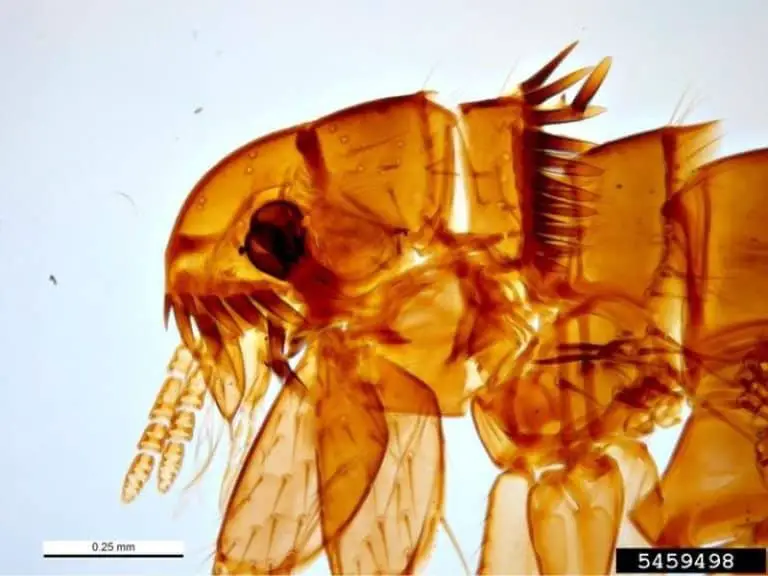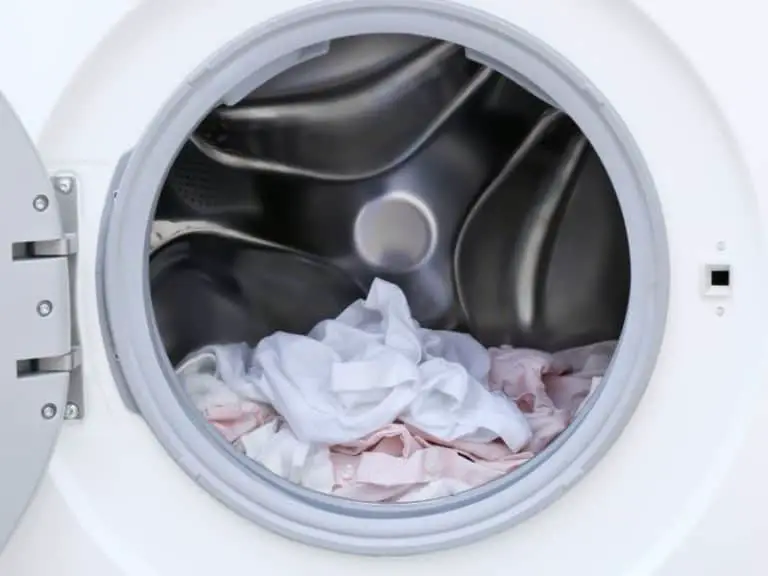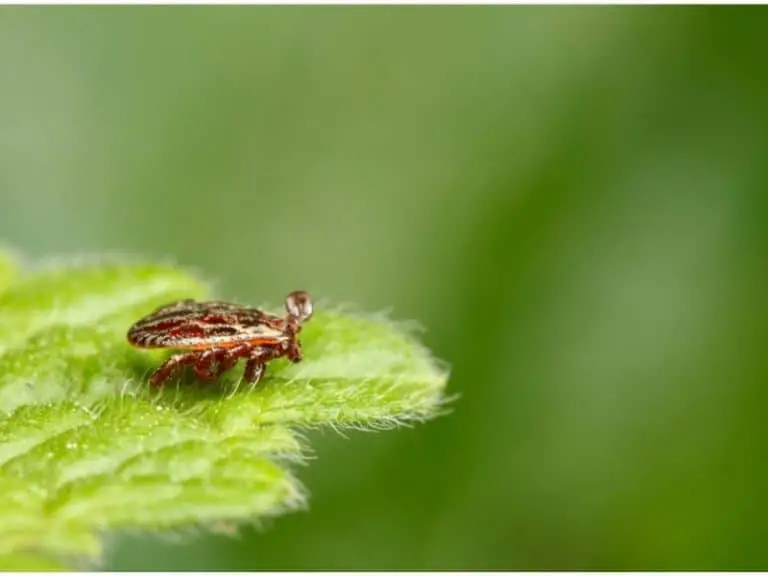What Time of Year Do Fleas Go Away?
You want to do everything you can for the health of your pet so that you are naturally interested to know what time of the year fleas go away and stop pestering you, your pet, and your home.
When the weather is cold, particularly during the winter, most people naturally believe that this is the season that fleas disappear or leave. But is this true, or is it a myth? We are going to find out the exact time of the year when fleas go away.
Unfortunately, there is no time of the year when fleas completely go away. Since they thrive in humid and warm conditions, they may slow down activity during the cold of winter, although they can still remain active, because your home is an ideal environment where they can continue to proliferate.
Fleas do not become inactive or hibernate when it gets cold. Since they cannot live in freezing temperatures, they opportunistically find hosts and hiding places in warm environments.
Freezing temperatures do not destroy flea eggs, but only slow down their development. Flea eggs are capable of hatching even during winter. It is thus essential to discuss what fleas go through during the cold seasons so that you can better deal with an infestation.
Do Fleas Die in the Winter Months?

Fleas do not necessarily die during winter. They can survive even when it is not the flea season. Fleas can be a problem all throughout the year, and pets can have an infestation even in winter. Flea populations may slow down, especially in the outdoors, but they do not die off completely.
Fleas do not easily die in winter. They more likely cannot survive freezing temperatures, but such conditions are not enough to wipe them out. You simply cannot depend on the weather to kill off fleas, even those that are located outdoors.
The flea has a life cycle that helps it to survive during these cold months. The female flea may start to lay eggs within 24 hours up to 36 hours after biting your dog or cat. In a month, one female is capable of laying up to ten thousand eggs.
These eggs are deposited in various places where they can develop normally. These places include your carpet and in hiding places where fleas dwell within your home.
When it pupates, the flea larva forms a cocoon to grow in. It can remain in its pupal state within the cocoon even for as long as 30 weeks, after which it then emerges in its adult form.
Cold and freezing weather conditions may slow down the flea’s development in its various life stages; it is still possible for a flea egg to hatch during the winter. Regardless of the ambient temperature at freezing levels, which can persist long enough to kill adult fleas, the female may have already laid her eggs in warmer places.
The main reason why fleas can still remain active and survive during the winter months is because they are capable of living and multiplying normally when they are indoors. They take refuge in our homes during this time.
The fleas caught with their “pants down” outside in the cold may slow down and even get killed; however, their indoor brethren can still be active, maintaining a regular life cycle inside your home.
Fleas hide in a warmer environment that is ideal for their survival. Their ideal conditions consist of a temperature range of 70 to 85° F with 70% humidity. In these conditions, they thrive.
Since we also need to survive in a warmer environment during the cold of winter, we will not likely let our homes become cold just to slow down and kill the fleas. It is therefore prudent to maintain your pet’s anti-flea medication even in winter, so that the fleas that are taking refuge inside your home do not get the chance to mount a massive infestation.
Fleas may also survive when they are in other protected areas that are near or within your property. Such areas may be humid and warm enough for supporting the fleas in their various life stages throughout the wintertime.
Fleas do not hibernate and become inactive in cold weather. Yes, they cannot live in freezing temperatures for a long period; they can, however, become opportunistic, looking for hosts that stay in warm environments.
Inside your home, it is as if winter does not exist.
Fleas can continue to feed, breed, and infesting your pets and your home as they normally do. They definitely prefer to stay indoors during the winter months in order to maximize the ideal conditions of your home, including your pets, which are their ideal and readily available source of food.
What Months are Flea Season?
In general, flea season is in the warmer months. In the Northeast and Midwest, it is from March/April until November/December. In the Southeast and Hawaii, it is year-round. In the Southwest and Northwest, some parts are year-round, while some are from March to December. In Alaska, it is from May to October.
Some regions have more populations compared to others. Fleas proliferate in conditions where humidity levels reach 50 to 90%, and they prefer 70° F or higher temperature levels.
Flea season in various regions in the United States vary considerably. This season also coincides with the tick season, because these parasites also have the same environmental requirements as fleas in order to thrive. The various tick and flea seasons are discussed below.
Northeast Flea Season
The Northeastern region of the US is bordered in the north by Canada and in the east by the Atlantic waters. It has the most dense population, thus, it has a large pet population.
The states that compose this region are the following: Vermont, Rhode Island, Pennsylvania, New York, New Jersey, New Hampshire, Massachusetts, Maryland, Maine, Delaware, and Connecticut.
The flea season in this region starts during the onset of springtime, particularly late March up to early April. As one goes further down south, the end of the season may be either in November or December, depending on when temperatures begin to drop as winter arrives.
In Pennsylvania and in the areas southwards from it, this season can stretch well up to December due to their geographic location. The central and northern parts of the state of Pennsylvania have a shorter flea season, while the more southern ones have longer seasons. It is prudent to stay vigilant for these pests in these places until December.
Southeast Flea Season
The Southeast region is bounded in the east by the Atlantic and in the south by the vast Gulf of Mexico. It also reaches far inland.
According to the definition of the USGS or US Geological Survey, this region includes the US Virgin Islands, Puerto Rico, West Virginia, Virginia, Tennessee, South Carolina, North Carolina, Mississippi, Kentucky, Louisiana, Georgia, Florida, Arkansas, and Alabama.
In this region, the flea season is considered to occur at all months of the year.
Midwest Flea Season
This region is composed of the northern and central parts of the US. Above, it is bordered by Canada, while bordering it in the northeast are the Great Lakes.
The states in this region include Wisconsin, South Dakota, Ohio, North Dakota, Nebraska, Missouri, Minnesota, Michigan, Kansas, Iowa, Indiana, and Illinois. This region’s flea season varies considerably due to its large geographic range.
North Dakota has the shortest season, with a period from late May to early November. The Wisconsin, South Dakota, Nebraska, Minnesota, Michigan, and Iowa season lasts from April to November, except for Michigan which ends in December.
Meanwhile, Ohio, Missouri, Kansas, Indiana, and Illinois have the longest season, which lasts from March to December.
Southwest Flea Season
This region is not precisely defined. It generally encompasses Utah, Texas, Oklahoma, New Mexico, Nevada, Colorado, California, and Arizona. The Pacific borders its western side, while the vast Gulf of Mexico as well as Mexico compose its southern border.
This region is also diverse, since Texas, Nevada, California, and Arizona have a year-round flea season, while Utah, Oklahoma, and New Mexico have a season that lasts from March up to December. Colorado has a short season spanning April up to November.
In California, there are areas with cold mountain climates that may not have a year-round flea season. Texas also has a diverse climate due to its vast geographical scope. Although it also has a year-round season in general, some places have lower temperatures during winter that can have snow; these places may not have the same season of high flea activity. These locations include the lone Big Bend mountain ranges as well as the northern panhandle.
Northwest Flea Season
This region has the Pacific as its western border and Canada as its northern border. The states in this region are Wyoming, Washington, Montana, Idaho, and Oregon. These states have varying flea seasons.
Oregon and Washington have temperate coastal climates, so that they have a year-round flea season. Idaho has winter to break its generally uniform climate, although it still experiences a long flea season which begins in March and concludes in December. Montana has an April to November range, while Wyoming has the shortest season from May to November.
Alaskan Flea Season
It is normal and correct to assume that since Alaska is at the northern part of the North American continent, it has a very short flea season. It actually has the country’s shortest flea season, which starts in May and concludes in October.
Hawaiian Flea Season
As for Hawaii, since its climate is Alaska’s exact opposite, it understandably has a year-round flea season.
What Time of Year are Fleas Bad

In general, fleas can wreak havoc to pets and homes at any time of the year. The flea season may have a delineated duration depending on the geographical regions in the country; in essence, however, fleas can be considered to be bad all year round. The flea season does not really start or end.
Outbreaks of flea infestation are triggered by environmental factors such as humidity and temperature, and they affect most of the country throughout the entire year.
The flea season varies depending on your location, and some places have it really bad when it comes to fleas all throughout each year. Other states and areas do have a sort of break during winter.
Even in the colder months, fleas are able to survive the winter in a state of dormancy. They are just there, waiting for the warmth of spring to return before their opportunity arises once more to strike and infest your pets and your home.
Fleas are active at temperatures ranging from 65 to 80º F and a level of humidity from 75 to 85%. Nonetheless, they can live outside of these environmental conditions; they are patient enough to wait until they can feed on your pets again.
While flea pupae may stay dormant for as long as 30 weeks, the developing fleas in these cocoons are able to emerge only within two weeks and up to a delayed duration of 50 weeks.
Fleas can also overwinter when the weather is not so cold; cat fleas have been shown to survive up to 10 days with temperatures reaching a low of 37.4º F. They can also survive up to five days with a temperature of 33.8º F.
Freezing temperatures kill fleas that are exposed.
However, those fleas that are in nests; inside your home; on your pet; in shelters such as barns, sheds, and the underside of your house; in sawdust and straw; and in other areas with mild temperatures; can lie in a dormant condition while the winter progresses.
They just wait for the conditions to become livable again before they reemerge.
In short, fleas are experts at taking shelter indoors during the cold. The means that pets have no real breaks when it comes to the risk of flea infestation in winter.
As a matter of fact, you and your pets may actually be even more at risk during this time when it comes to fleas, because they tend to move into the inner recesses of your pet’s fur where it is warm and safer.
Meanwhile, many pet owners think that they are free from the fleas due to the inhospitable winter season. This is not true. Owners become barely aware flea eggs, larvae, and pupae, which can continue to develop normally inside their homes and attack once they become adults.
Inside your home and on your pets, fleas can continue unabated and pester you even during winter. In other words, fleas can be a problem all through the year.
This means that you still have to have your pets treated for fleas even during wintertime. Your vet will know the right products to recommend or prescribe to your dog and cat to keep them safe from fleas during this period.
Q & A
How do you know if your dog is infested by fleas?
These are the signs that your dog has fleas:
Itching, scratching, and biting
Among the most obvious signs of fleas on your dog is its constant itching and scratching. Fleas need to maintain their attachment to their hosts for as long as they can in order to survive.
Scratching can dislodge them from their host’s fur so that they will tend to stay in hard-to-reach areas on your dog where they will most likely be safe from scratching. Your dog will bite their skin if it cannot scratch it.
Flea dirt
Flea dirt is the poop of fleas. It appears like sprinkled black pepper on the fur of your pet. When smeared, it will produce a reddish to brown blood streak. Flea dirt can also be seen in the surroundings of your home.
Reddened skin
Dogs that are allergic to the saliva of fleas will have reactions that include reddening of their irritated skin from the flea bites. This can open into a wound and form scabs.
Loss of hair
Too much scratching by your dog will eventually remove its fur on the affected parts. In addition, the more extreme flea bite reactions cause a falling out of fur, leaving bald skin patches.
Mysterious skin bumps
Fleas also bite humans, and they will not hesitate to bite you if they are desperate for a blood meal. These bites appear as small, reddened bumps on human skin, which are also itchy and irritating. These bumps will be seen in clusters at your extremities, particularly your arms, legs, and feet.
Do fleas go away by themselves?
If you do not take action, fleas are not likely to leave your pet and your home willingly.
Fleas are among the world’s most resilient parasites, and if they found your home, together with your pets, as a favorable habitat and source of sustenance (e.g. blood meal), they will stay and enjoy the home they have invaded.
You may have a slight chance that they will leave when winter comes and the humidity inside is not ideal, but for the vast majority of homeowners and pet owners, this does not occur.
Medical Disclaimer: TheHomePestControl is a digital publisher and does not offer personal health or medical advice. The contents of this website are not intended to substitute for professional medical advice, diagnosis, or treatment.
Affiliate Disclaimer: As an Amazon Associate, I earn from qualifying purchases made on our website. If you make a purchase through links from this website, I may earn a commission at no additional cost to you.






